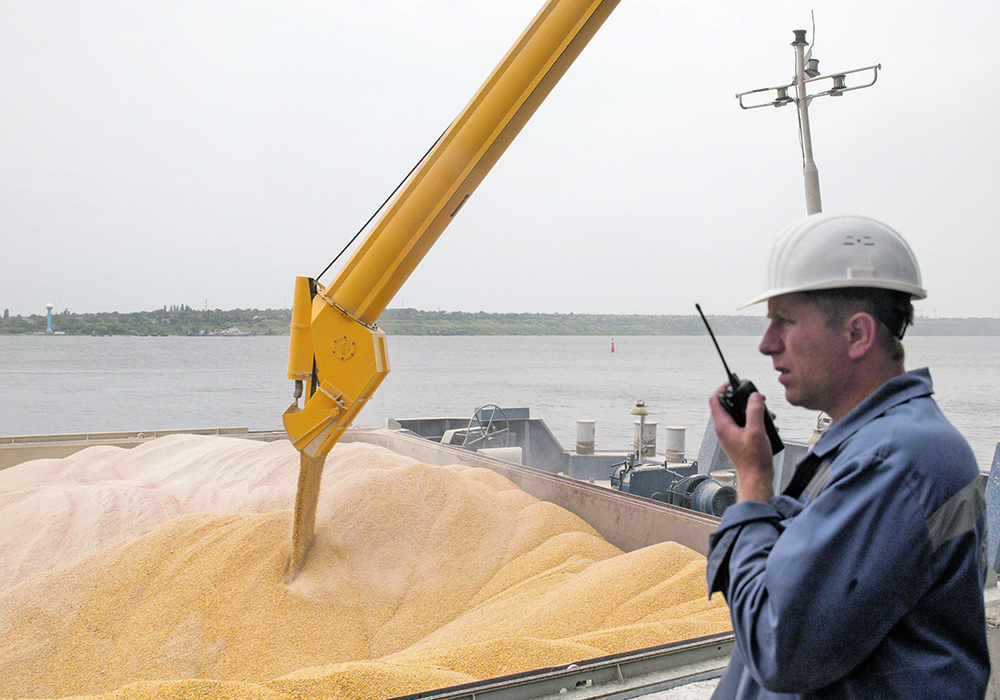Canadian exporters warned that deal to open up to Russian grain is the tip of the iceberg as China looks for new suppliers
China is opening the door to Russian exports of wheat and barley, potentially creating more competition in Canada’s top market for those two commodities.
News leaked out of Russia on Feb. 4 that China is dropping phytosanitary rules limiting imports from only seven regions of Russia, none of which were prime production areas.
The country is now accepting imports from all regions of the country.
“It means new dynamics and added competition for traditional exporters,” said Daniel Ramage, director of market access and trade policy with Cereals Canada.
Read Also

Russian wheat exports start to pick up the pace
Russia has had a slow start for its 2025-26 wheat export program, but the pace is starting to pick up and that is a bearish factor for prices.
“It tells us China is looking at all sources of supply.
On the wheat side, he doesn’t think it will result in too much extra competition for Canada, which shipped 2.54 million tonnes of wheat to China in 2021.
China is the world’s biggest wheat producer. It is projected to harvest 137 million tonnes of the crop in 2021-22.
It tends to import premium, high protein, high quality milling wheat from Canada to blend with its domestic supplies.
Russian wheat is lower protein wheat that will compete more directly with China’s own domestic supplies.
However, Russia could offer stiff competition for Canadian feed barley exporters.
China typically accounts for 70 percent of Canadian barley exports, and much of that is feed barley.
The one thing Canada has going in its favour is an ocean freight rate advantage over Russia via the west coast ports of Vancouver and Prince Rupert.
“It is a relatively shorter distance to China and a more direct route,” said Ramage.
Brennan Turner, founder of the crop marketing hub Combyne, agrees with Ramage’s assessment of the competitive threat to Canadian wheat and barley.
“My concern is that this is becoming a slow spiral down,” he said.
Turner believes China is taking steps to form closer economic ties with Belt and Road Initiative countries and distancing itself from traditional suppliers like Canada and Australia with whom it is having political spats.
China is also heavily investing in infrastructure in markets such as South America and Africa to secure continued sources of supply from those favoured regions.
He believes Russia may take away some of Canada’s feed barley sales in China, but that may create a musical chairs scenario where Canada picks up business in markets Russia usually services.
The other alternative is that there may be more barley available for Canada’s domestic livestock industry, which might not be a bad thing considering stocks of the crop are at record low levels.
China has been attempting to diversify its portfolio of food trade partners for the last decade, according to a Feb. 4, 2021, report from the U.S. Foreign Agricultural Service (FAS).
The country’s rising middle class is looking for an increasingly diverse and affordable diet. Import diversification is consistently highlighted as a policy objective in the central government’s annual policy documents.
Livestock disease outbreaks, bilateral trade tensions, manmade and natural disruption and COVID-19 have all reinforced the country’s push to diversify.
In 2019 and 2020, China’s General Administration of Customs approved at least 100 new agricultural products for import.
The country is signing numerous bilateral trade agreements that have also facilitated the new approvals.
“As imports have grown, China has begun widening its mix of international suppliers in order to avoid overreliance on any single market,” said the FAS.
It noted the U.S. used to be one of only a handful of countries supplying certain agricultural products to China, but that is no longer the case.
The FAS recommends that the U.S. needs to focus on the superior quality, safety and sustainability of U.S. products as a way to differentiate themselves from the growing competition.
“Targeted marketing and educational activities to highlight these unique characteristics are helpful ways to generate awareness and interest in U.S. products,” said the FAS.
Ramage had a similar message.
He believes Canada needs to increase its investments in overseas market development and support.
“When conditions change and competition increases, that’s when the work that goes into promoting the value of Canadian grains and building our markets becomes even more important,” said Ramage.
















